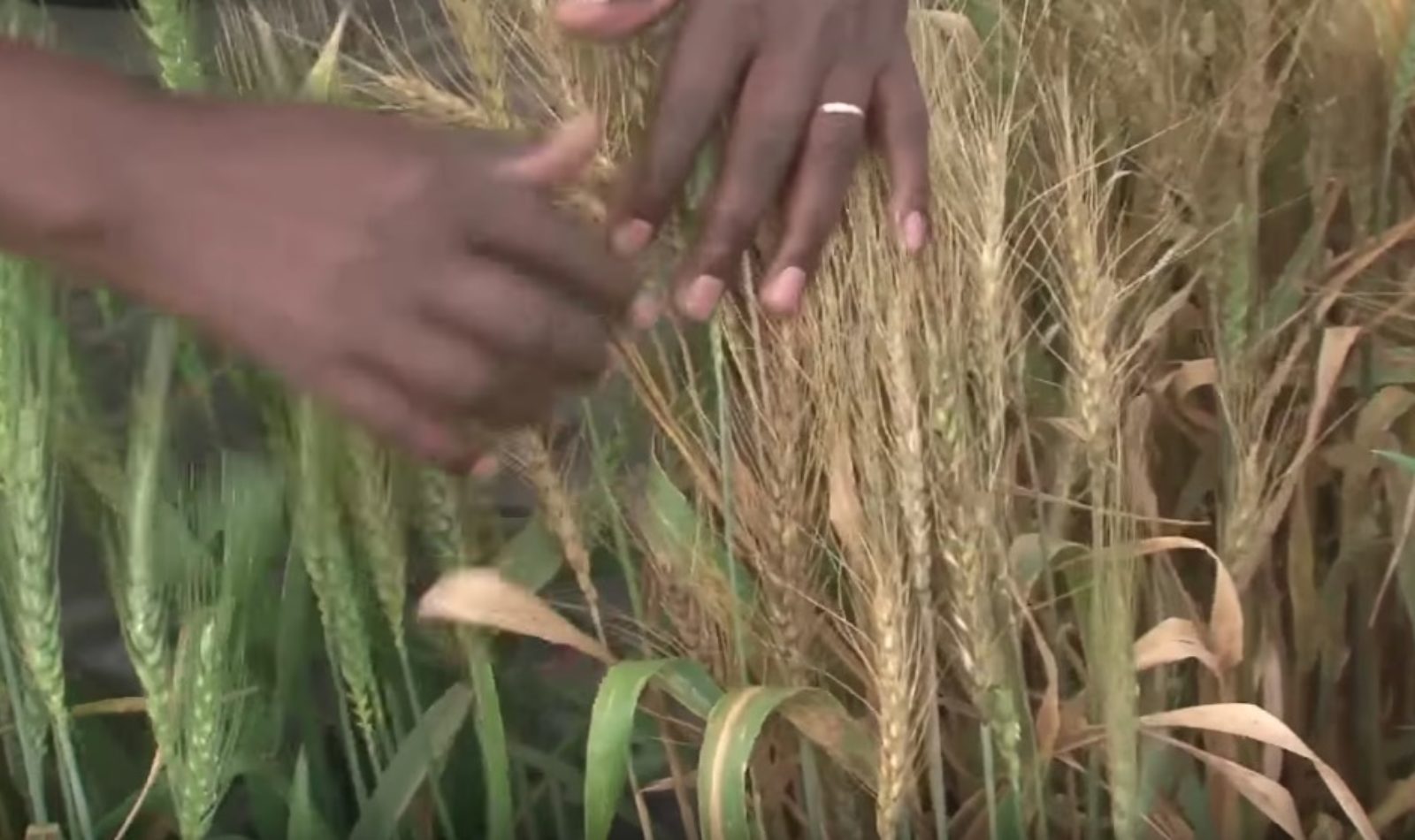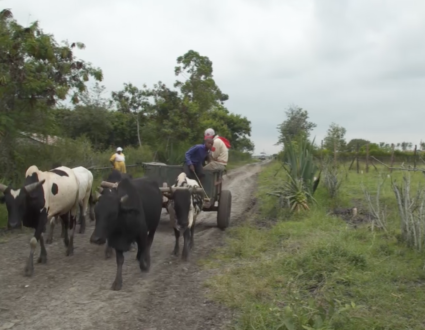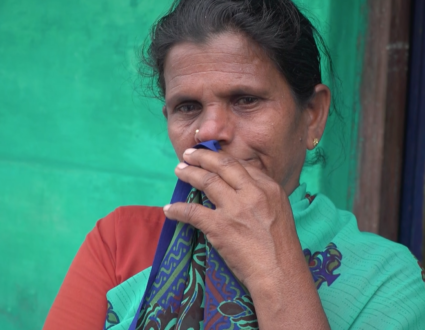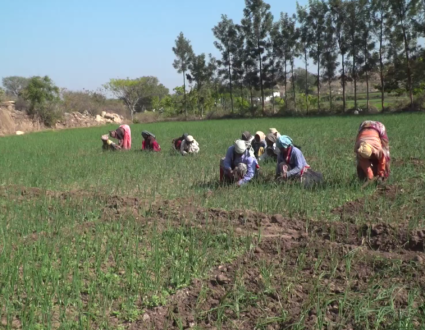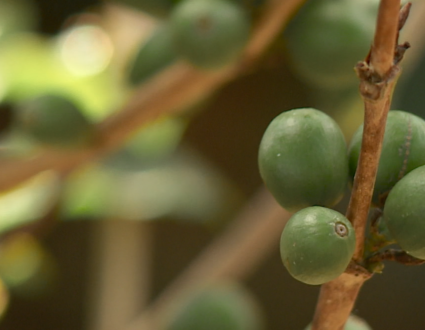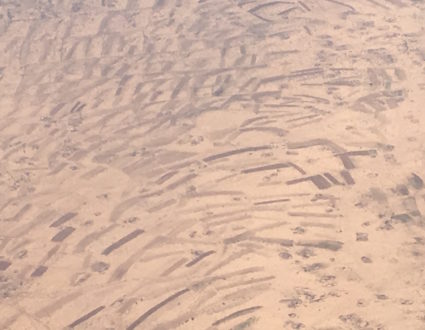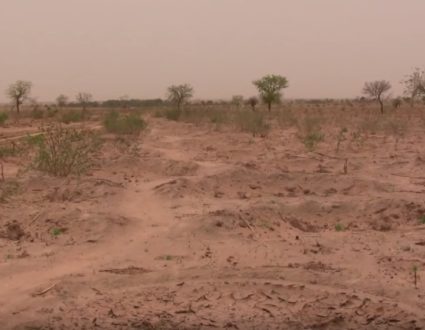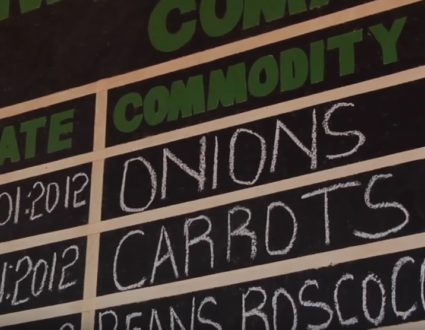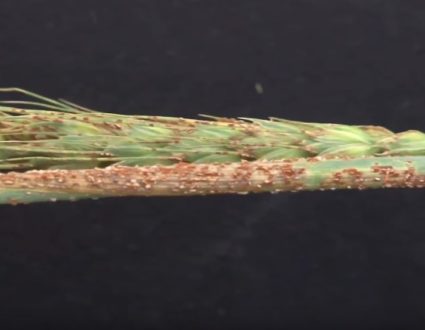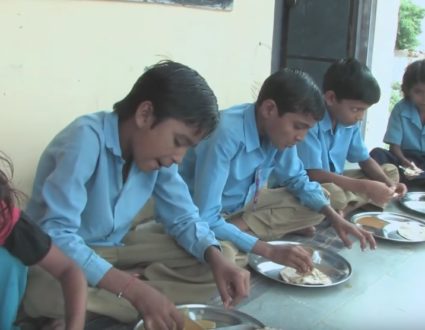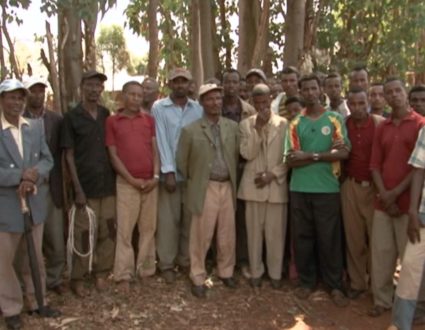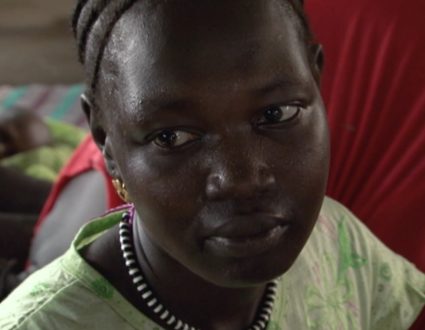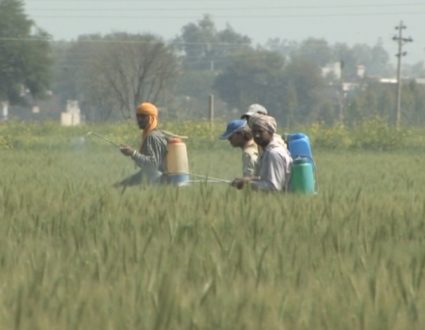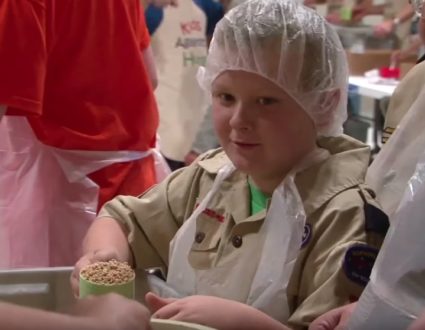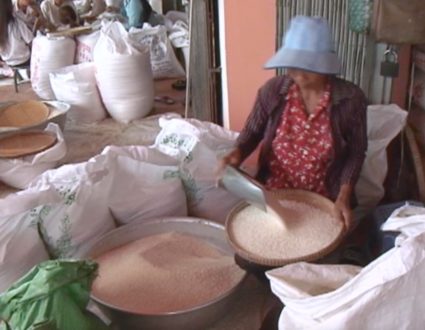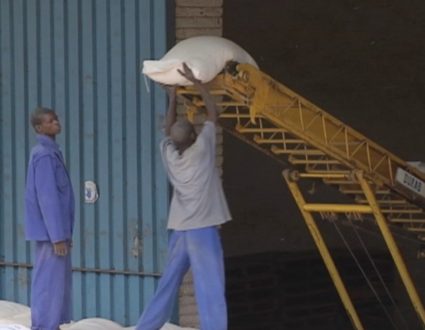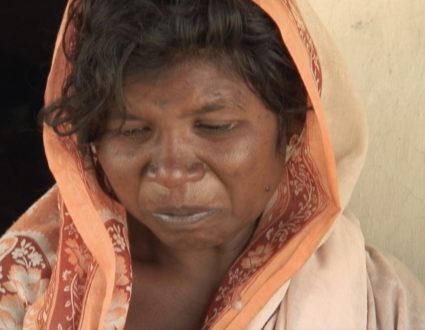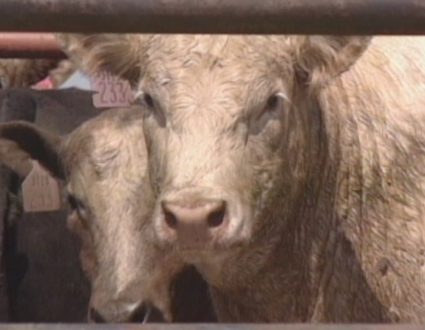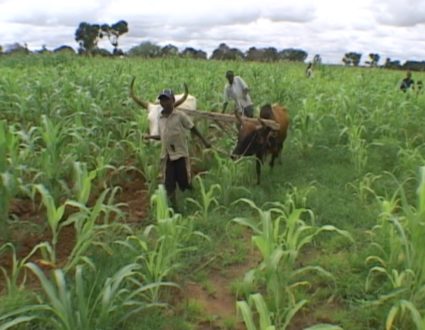FRED DE SAM LAZARO: When the price of bread and other food staples goes up in the developing world, riots often result. What would happen if the majority of the world’s wheat crop was wiped out by disease is unfathomable.
PETER NJAO, plant pathologist: This is a susceptible variety. And, actually, the disease is eating the whole plant.
FRED DE SAM LAZARO: Scientists Peter Njao and Ruth Wanyera say a fungal disease thought long under control called wheat rust is back and could destroy 80 percent of all known wheat varieties if it isn’t stopped in its tracks.So, here in Kenya’s Rift Valley, they are testing wheat varieties from around the world to find the most resistant strains.
RUTH WANYERA, plant pathologist: Stem rust supposed to get disease the low-, mid-altitude areas. But for Ug99, we are getting it in the areas about 3,000 meters above sea level.
FRED DE SAM LAZARO: The wheat stem rust was first discovered several hundred miles west of here in Uganda in 1999, hence the name Ug99. It blew very quickly into the farmlands here in Kenya’s Rift Valley, and thereafter east, across the Red Sea into Yemen and as far east today as Iran.The big fear is that, under the right climate conditions, a dry spell and winds, stem rust will spread further east into the populous Asian subcontinent and later to China. In Kenya, wheat rust has been devastating for the subsistence farmers who use a few of their acres to grow the crop and earn some extra income.Samuel Langat got half his normal crop.And you got about 12 bags per acre this year?
SAMUEL LANGAT, farmer: Yeah.
FRED DE SAM LAZARO: You used to get double that before?
SAMUEL LANGAT: Yeah.
FRED DE SAM LAZARO: And even that required costly chemical spraying that further cut into any profit.
SAMUEL LANGAT: I sprayed twice, but some people actually went even up to four times. So, it depends on actually the kind of money you have.
FRED DE SAM LAZARO: Bruce Nightingale plants 1,000 acres on his large farm operation, one that dates back to British colonial days. He’s managed to preserve a crop, but only after repeated spraying with chemical fungicides.
BRUCE NIGHTINGALE, farmer: Without the fungicide, there will be no wheat in this country and most other countries. It’s as simple as that. Okay? We have to use the fungicide to get a crop of wheat. Our fear is that the rusts will build up resistance to the sprays faster that we can have new sprays for them.
FRED DE SAM LAZARO: Thousands of miles away in Minnesota, Brian Steffenson and colleagues are trying to find a solution. They can only work from November to April because if any fungus spores did manage to escape from the tightly secured lab, they could never survive a Minnesota winter.
MAN: So most of these are susceptible.
FRED DE SAM LAZARO: Creating resistant wheat varieties is a tedious genetic form of Russian roulette, crossbreeding different varieties in hopes of hitting the right combination of genes and traits.
BRIAN STEFFENSON, professor, University of Minnesota: You’re going to introduce the desired resistance gene, but you’re also going to introduce some other deleterious genes that may reduce the yield, they may reduce the bread-making quality and other aspects as well.
FRED DE SAM LAZARO: New technology, including more direct gene transfers, so-called genetic modification, can speed the process, but he says it will still take six years or more to create a new resistant strain of wheat. And new strains have to be found for all the different kinds of wheat that go into making everything from pasta to crackers.
BRIAN STEFFENSON: This plant is quite susceptible to stem rust.
FRED DE SAM LAZARO: Wheat rust was thought to be under control in the 1950s, but, instead, it was quietly mutating to cause the new threat.In his search for new resistant genes, Steffenson has gone back to the very beginning of wheat, scouring the Near East region called the Fertile Crescent, where wheat was first domesticated.
BRIAN STEFFENSON: There’s been a tremendous amount of diversity that’s left behind after man first domesticated our crops. We’re identifying resistance genes that are effective against Ug99, but are not putting them in singly into wheat cultivars, but rather putting them in as a pyramid of genes, multiple genes at one time, so that this will hopefully keep the pathogen off balance, it will not be able to overcome all of those resistance genes, and it will lead to more durable control of the stem rust.
FRED DE SAM LAZARO: Back in Kenya, Peter Njao says about 10 percent of the experimental new varieties are showing good resistance to stem rust. But that’s just the first step.
PETER NJAO: There is still a number of stages to go. You need, after that, to do adaptation trials, seed multiplication and seed distribution to the farmers. Each one of that requires time. And that is what we are fighting with.
FRED DE SAM LAZARO: The small farmers won’t be able to hang on that long.
BRUCE NIGHTINGALE: We desperately want seed from this because it’s new variety.
FRED DE SAM LAZARO: Bruce Nightingale has been trying a new variety developed by the Kenya Institute derived from a Brazilian species. He’s cautious, but hopeful.
BRUCE NIGHTINGALE: It’s too soon to say, but, visually, they look very promising. And in the trials that we have seen, they looked to be more resistant against fungal infections, although not entirely resistant.
FRED DE SAM LAZARO: You still need to spray them.
BRUCE NIGHTINGALE: We have to spray them, and we still are very, very dependent on the plant breeders to try and genetically produce something that is resistant to that.
FRED DE SAM LAZARO: Scientists here say it may take until 2016 before they could send resistant wheat strains to meet most farmers’ needs. As they race to genetically outfox stem rust, it will be a game of hoping, praying and spraying.
A risk for wheat
Scientists in both Kenya’s Rift Valley and Minnesota working to stop UG99, a wheat plant disease, before it spreads further and threatens global food supply.
We have to use the fungicide to get a crop of wheat. Our fear is that the rusts will build up resistance to the sprays faster that we can have new sprays for them.


